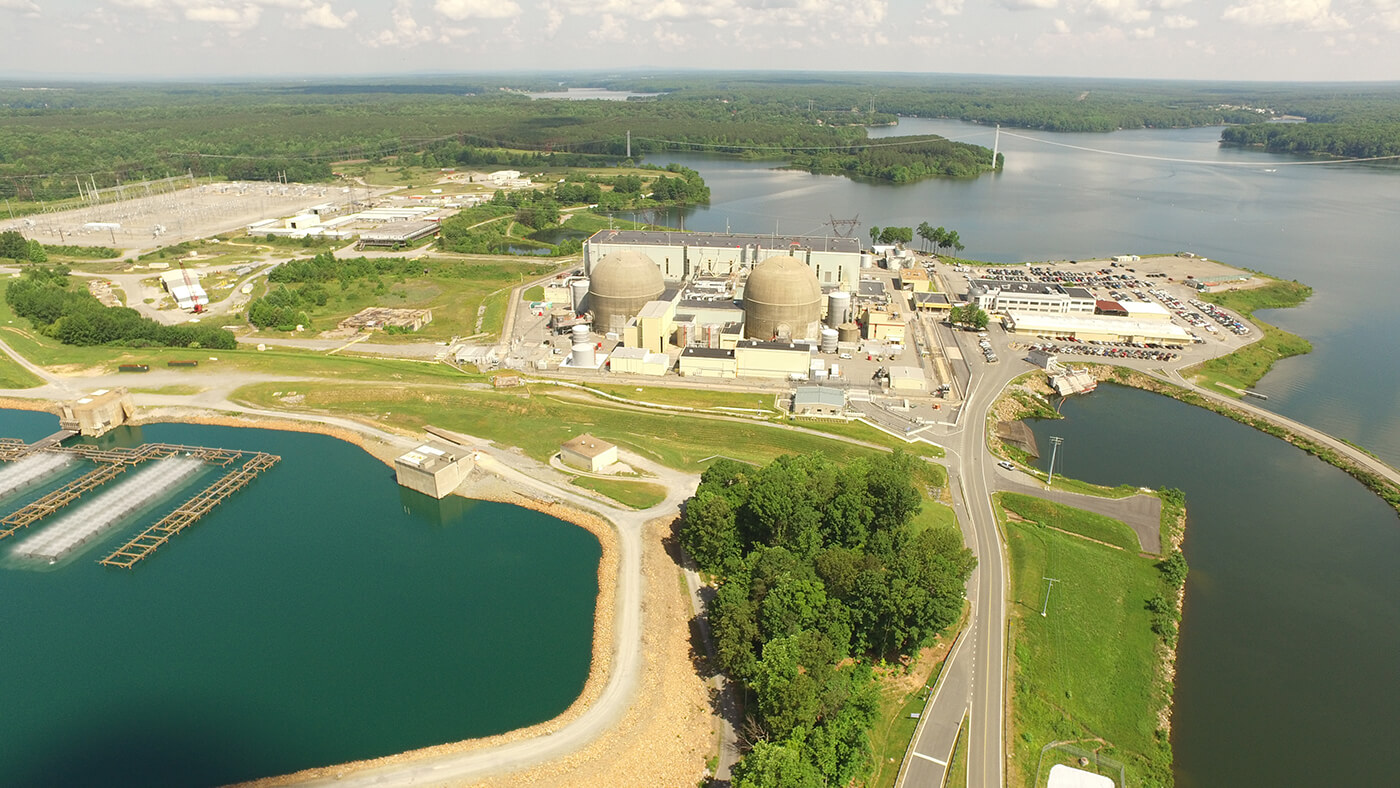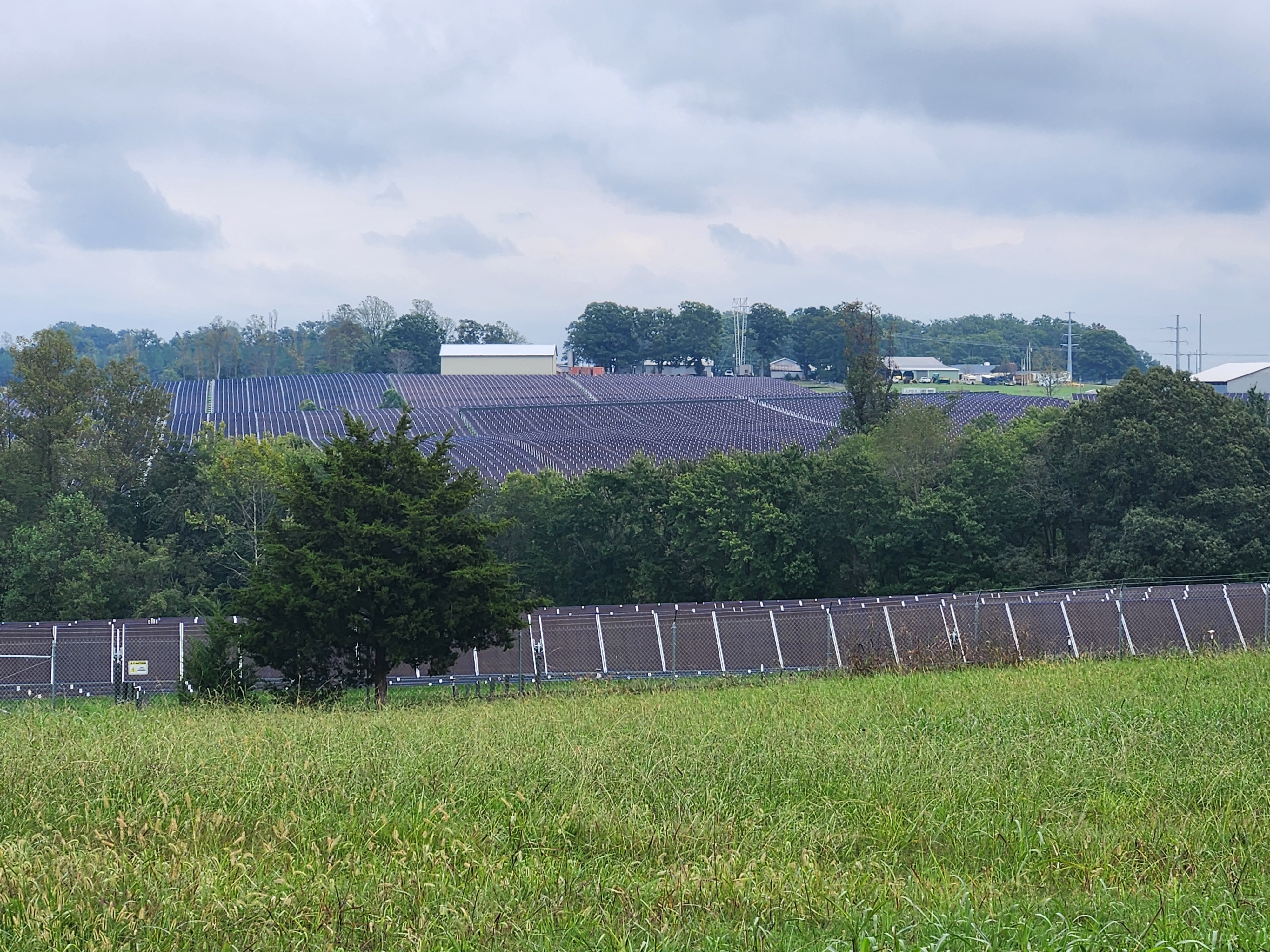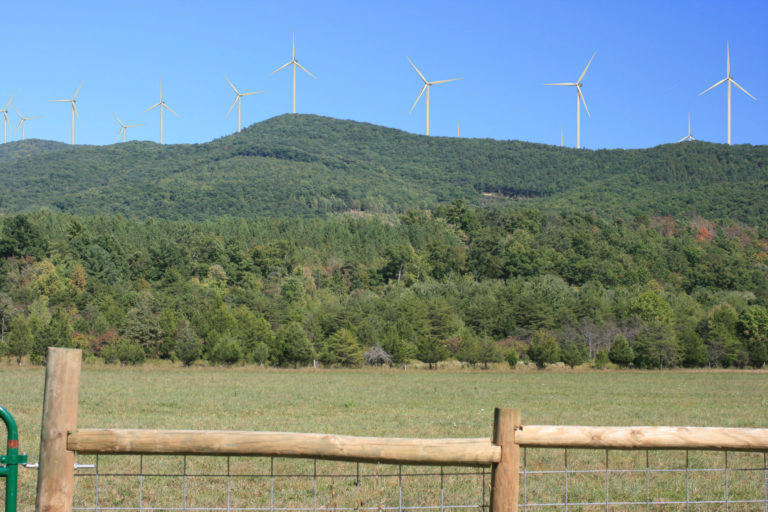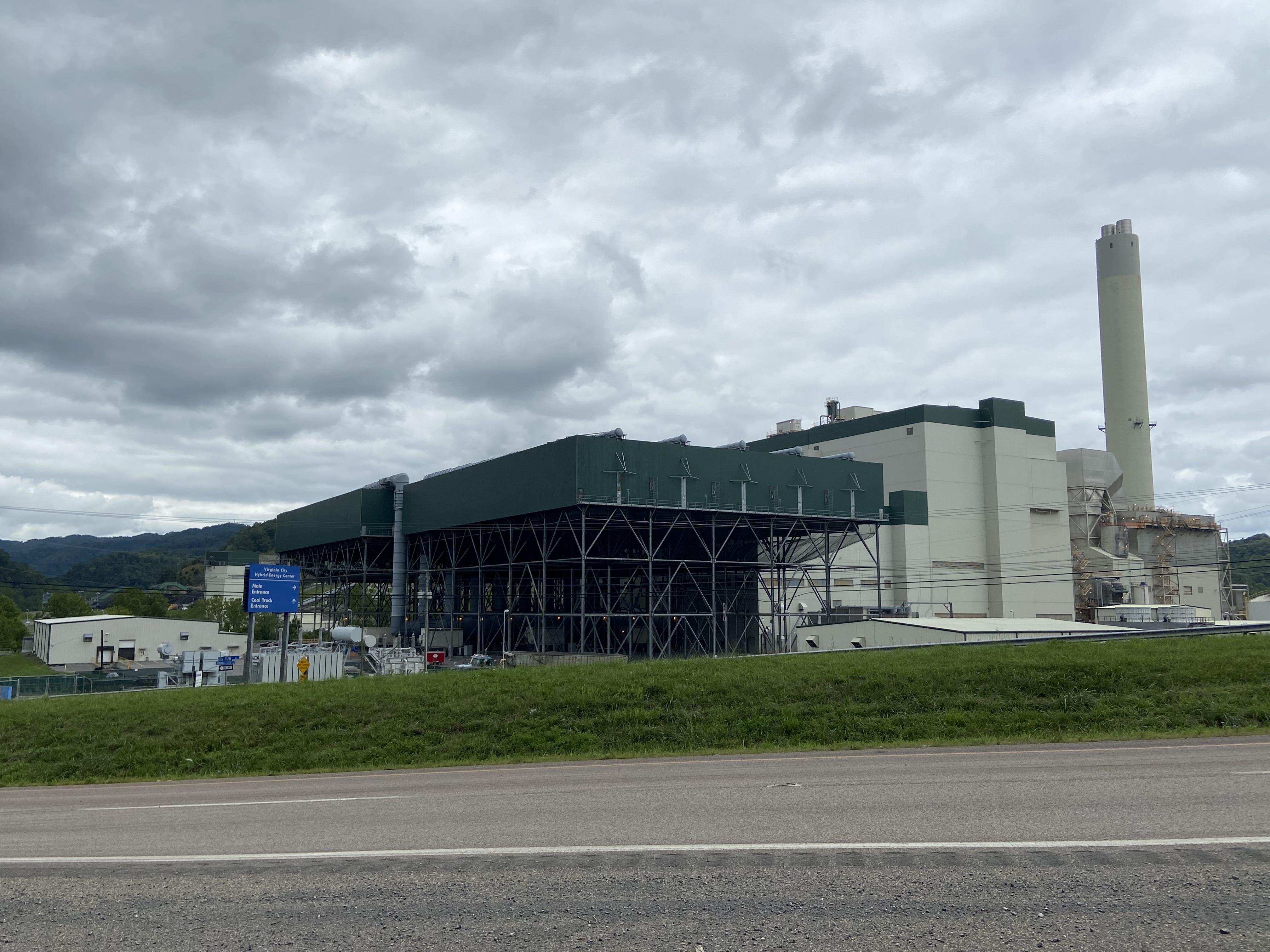We’ve launched a podcast. Episode 1 is a preview of the General Assembly session.
The words you’re about to read originated on my laptop here in the backwoods of Botetourt County. By the time you’re reading them on your phone or your desktop computer they have gone through multiple data centers — those massive warehouses full of servers that make the internet “go.”
It’s hard to say how many data centers they went through or where they are, but, since Northern Virginia has the largest concentration of data centers in the world (some accounts claim as much as 70%), the odds are good that these words have bounced around one or more data centers in Virginia.
Those data centers in Virginia also rely, in part, on electricity generated in Virginia, so that means between me typing them and you reading them, we’ve drawn upon either atoms being split at one of Dominion Energy’s nuclear plants in Louisa and Surry counties, or solar panels soaking up the rays somewhere in Southside, or one of its many natural gas plants, or one of Dominion’s wind turbines spinning off the coast of Virginia Beach, or Dominion’s Virginia City Hybrid Energy Center in Wise County that burns a mix of coal, coal waste and biomass, or its Bath County pumped storage hydroelectric facility, or … well, you get the idea. (Disclosure: Dominion is one of our donors but donors have no say in news decisions; see our policy. You can be a donor and have no say, as well. Here’s how.)
The point is that we’re all complicit, to some degree, in the growth of data centers and the power they use.
Let’s keep that in mind as we review the recent findings from a state report into data centers. Cardinal’s business reporter, Matt Busse, earlier wrote about this report by the General Assembly’s investigative arm, the Joint Legislative and Audit Review Commission. I also wrote the report in a previous column. The headline finding from that report: If data centers in Virginia continue to grow “unrestrained,” the demand for electricity will nearly triple by 2040.
The specific numbers: 10,765 gigawatt hours today and 30,512 gigawatt hours by 2040.
If we didn’t build a single new data center — an unrealistic assumption, of course, but good for theoretical purposes — then the power demand in 2040 would be just 12,383 gigawatts.
That means if we don’t do anything to restrain the growth of data centers, we’ll need to figure out how to generate 18,129 extra gigawatts of electricity.
Now, I’m certainly not suggesting we call a halt to building data centers. For one thing, that’s impractical. None of us seem willing to unplug from our digital world. Many of the localities we represent in Southwest and Southside would like data centers — they feel left out from the economic bounty of tax dollars and jobs, which JLARC puts at 74,000 in the state. (As for those tax dollars, Loudoun County now says about 31% of its local tax revenue comes from data centers. Homeowners there may think their property taxes are too high, but how high would they be without that data center revenue?)
Instead, I want to help us visualize how much power 18,129 gigawatts is.
The JLARC report very sensibly points out that we never get all our power from just one source and so any increase in electric generation would come in multiple ways: “For example, new solar facilities would have to be added at twice the annual rate they were added in 2024, and the amount of new wind generation needed would exceed the potential capabilities of all offshore wind sites that have so far been secured for future development,” the report says. “Large natural gas plants would also need to be added at an equal or faster rate than the busiest build period for these facilities (2012 to 2018), depending on VCEA compliance.” That’s the Virginia Clean Economy Act, which mandates Virginia’s power grid go carbon-free by 2050. The JLARC report calls this “very difficult.”
Even if we cut data center growth by half, JLARC downgrades the challenge to merely “difficult.” The report says: “If VCEA requirements were not considered, the biggest challenge would be building new natural gas plants. New gas would need to be added at the rate of about one large 1,500 MW plant every two years for 15 consecutive years, equal to the busiest period of the last decade (2012 to 2018). If it is assumed that VCEA requirements would be met, the biggest challenges would be building enough wind, battery storage, and natural gas peaker plants. Wind generation needs would be the same as the unconstrained demand scenario. The amount of new battery storage would be several times the small amount currently in place in Virginia and a significant number of new natural gas peaker plants would have to be constructed.” Both scenarios, the report says, also rely on “energy from as yet unproven nuclear technologies,” meaning the small modular reactors that both Dominion and Appalachian Power want to build — Dominion at its North Anna plant in Louisa County, Appalachian at the Joshua Falls substation in Campbell County.
I don’t know about you, but I still find this hard to visualize, so I’ve set out to simplify things.
Let’s just assume if the power demand triples, we need to triple everything we have now. That’s not quite how things work. There are complicated things like peak capacity and whatnot, but for visualization purposes, let’s try that. Here’s what tripling out electrical generation would look like.
Nuclear

Right now, Virginia has two nuclear power plants with two reactors apiece for a total of four (which together supply about 29% of the state’s power). Tripling means we need a total of 12 reactors — so eight new ones. Not the small modular ones, either, but the large conventional kind. Since 1990, the number of nuclear reactors in the United States has declined, so adding eight reactors is something we haven’t done since the heyday of nuclear construction in the ’60s, ’70s and ’80s. In the meantime, which localities in Virginia are willing to volunteer themselves for even one nuclear reactor, much less two, four, six or even eight?
Dominion and Appalachian may have lucked out with their choice of sites for SMRs. Dominion wants to put one at its existing nuclear plant at North Anna; Appalachian picked out a site near BWX Technologies, which already has nuclear materials present. At some point, though, we’ll run out of such easy choices.
Solar

The Virginia Solar Database put together by the Weldon Cooper Center for Public Service at the University of Virginia says that 132,922 acres of solar development have been approved in the state. That doesn’t mean all those projects have been built, just that they’ve been approved, so the actual number is somewhat lower, we’re just not sure how much lower. Also, remember that not all of a solar site is covered by solar panels. There are buffer zones around the site and there may be parts of the property that aren’t suitable for solar development. Anyway, 132,922 acres is what’s been approved so far.
If we triple that, we’re talking 398,766 acres of solar projects. That’s the equivalent of devoting all of Mecklenburg County to solar farms. Or, if the Mecklenburg example doesn’t strike a chord in some parts of the state, let’s try this: It’s the equivalent of bulldozing everything in Loudoun County to make way for solar and still needing to take some of Fairfax County.
Wind

Dominion’s offshore wind project has been controversial enough — for some it’s the cost, for others, the looks. Now imagine tripling that. Is that even possible? How about onshore wind? A Charlottesville developer has been trying for almost nine years to build the state’s first onshore wind project in Botetourt County, in what seems to be to be the ideal location — it’s very hard to see (although it would still be visible enough that some have objected). Even now, the project has yet to be built, although the developer says construction will start this year. Can Virginia supply more onshore wind? Sure. Will it? Previous projects in Highland County and Tazewell County have all foundered, partly because of local opposition. It’s obviously pretty hard to build just one onshore wind project in Virginia; could we really build more?
Coal

Until now, I’ve just dealt with non-carbon forms of energy to be in line with the Clean Economy Act. However, if that weren’t a factor, then if we’re tripling our existing power generation, then we could build two more Virginia City Hybrid Energy Centers. Environmentalists would have an apoplexy about that because they don’t even like the single one that exists in Wise County. Virginia City burns a mix of coal, coal waste and biomass. Legislators in Southwest Virginia would love this, though, because Virginia City is a big employer in a region that very much needs jobs.
I could go on (how many more gas plants and gas pipelines would you like?), but you get the idea. Now, keep in mind that all these figures are based on the existing power supply — which means none of the fanciful projections take into account the Clean Economy Act and converting fossil fuel generation to non-carbon forms of energy. That means all these figures understate the amount of energy we’d need. If we eliminate fossil fuels, we’ll need more solar, more wind, more nuclear — but where and how are we going to put those generation sites when we’re having a hard time siting them now?
These projections also assume that we’ll continue to be able to import 20% of our energy needs — which means we’re counting on other states to increase their power generation. That may satisfy those who don’t want power generation in their backyards, but doesn’t factor into what that out-of-state power might cost or what sources it comes from. Most of the other states that join Virginia in the interstate grid known as PJM rely far more on fossil fuels than we do, so the more out-of-state power we use, the more we’re burning carbon, just in some other state.
What’s the solution here? I have no idea. None of us are going to go back to the pre-digital age, but, as we’re finding out, the digital age isn’t all code floating out there in cyberspace somewhere. The digital age requires physical infrastructure, just as the industrial age did, and that infrastructure requires power — but few of us want that power generated near us. The General Assembly is about to take up bills that try to regulate both data centers and energy projects. This is the rough math legislators will need to keep in mind.
The General Assembly session is delayed but politics go on
A storm that knocked out water in Richmond has forced the legislature to put off its business until Monday. But we still have lots of other politics, and I’ll talk about some of them Friday in our weekly West of the Capital political newsletter. You can sign up for that or any of our other newsletters here:



